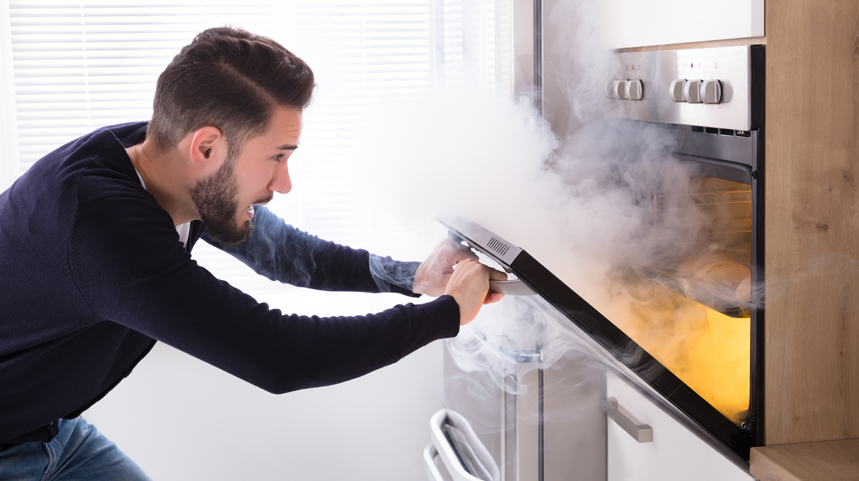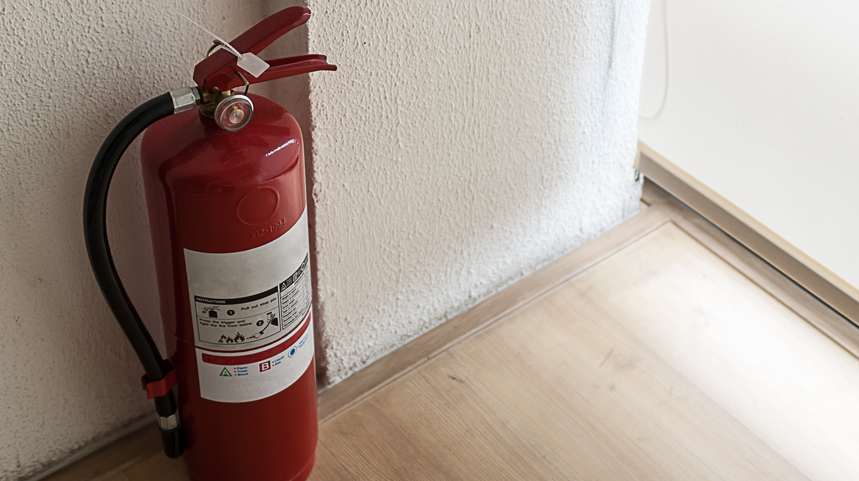As evidenced by this summer’s rash of wildfires raging across America, fires are a scary phenomenon. Wildfire, in fact, is a natural phenomenon that is somewhat predictable; the U.S. Fire Administration reports that more than 1.3 million fires that aren’t due to wildfires kill more than 3,000 people each year, cause more than 15,000 injuries, and cost nearly $15 billion in losses. Let’s take a closer look.
What Causes Fires?
If we understand what causes fires, we can learn how to prevent them. According to the U.S. Fire Administration, more than half of all fires begin with cooking. We can help prevent fires caused by cooking by keeping a fire extinguisher near the kitchen, keeping potholders and other cooking equipment away from the stove, and keeping an eye on anything you’re cooking on a temperature higher than warm.
 Nearly 10 percent of all residential fires are caused by home heating equipment, an additional six percent by electrical malfunction, and over three percent by appliances.
Nearly 10 percent of all residential fires are caused by home heating equipment, an additional six percent by electrical malfunction, and over three percent by appliances.
First of all, furnaces should be inspected annually and any boxes, paper or other flammables should be kept away from the furnace. Chimneys should also be inspected each year and cleaned, if necessary, by a chimney professional to prevent dangerous creosote buildup. Other places to check up include the HVAC system and the dryer vent duct, which should be cleaned out regularly not only to keep the dryer working at maximum efficiency, but because highly flammable lint builds up over time and causes house fires.
Frighteningly, the third-highest cause of residential fires is listed as “unintentional, or careless.” You can mitigate this risk by taking intentional steps to protect your home.
Most importantly, smoke detectors, carbon monoxide detectors, and fire extinguishers are no longer optional devices; they’re the first line of defense against potentially deadly threats to you and your family. They should also be tested once a month and the battery replaced regularly according to the manufacturer’s directions.
 It’s also important to use caution every time you use fire, whether you’re grilling, using fire pits, or lighting candles or torches. Teach children safety rules for household items that could spark a fire, and train them to keep stairways and exits clear of furniture, toys and other obstructions that could slow your family’s escape. You might also investigate fire blankets, home fire sprinkler systems or a fire escape ladder to help prevent or escape from a fire.
It’s also important to use caution every time you use fire, whether you’re grilling, using fire pits, or lighting candles or torches. Teach children safety rules for household items that could spark a fire, and train them to keep stairways and exits clear of furniture, toys and other obstructions that could slow your family’s escape. You might also investigate fire blankets, home fire sprinkler systems or a fire escape ladder to help prevent or escape from a fire.
Other smaller sources of fire include fires that are set intentionally, smoking, equipment malfunction, and unknown causes.
Investing in Fire Safety Infrastructure
There are also home improvements you can make to help make your home as fireproof as possible. These include:
- Widening your driveway to ensure that firefighters have clear access to your home as well as a good escape route
- Creating a fire-defensible space around your house that extends at least 30 feet away from buildings and structures
- Making sure your gutters are cleaned on a regular basis to prevent the buildup of flammable leaves or needles
- When updating your home, consider less flammable materials such as brick, stone, and metal for roofing and siding as opposed to wood or vinyl
- Keep your grill away from siding and learn how to put your grill out completely
- Considering double-pane or tempered fire-rated window glazing to help prevent extreme buildup of heat
- Considering closable shutters for large windows as radiant heat from an external fire can actually ignite materials inside a home
- Ensuring that your fireplace chimney has an effective spark arrestor
- Ensuring there are metal screens, no thicker than a quarter-inch and noncombustible, on all vents